2010 Litespeed Archon C2 (Bike Build)
Considering my passion for cycling, it may surprise you that I didn’t have a single two-wheeled non-motorized vehicle that was designed and built in the 21st century. Until this year. I actually skipped a whole decade (the 2000s) and, in late 2010, purchased a heavily discounted Litespeed Archon C2 frame. It would become the basis for my Super Bike.
Litespeed is famous for their legendary titanium frames, but aside from a brief foray into using carbon fiber between 2002-2006, never used the black magic material until their 2010 Archon C1, C2, and C3 range. After years of development and leveraging some carbon fiber and aerodynamic know-how from its sister company Quintana Roo (a triathlon bicycle maker), Litespeed came out with a unique product that not only is sexy in its lines, but boasts a number of features that distinguish it from other carbon fiber bikes coming out from Taiwan.
Below is a list of modern day features the Archon incorporates (some are proprietary, where noted). In the column next to them are what my Cannondale 3.0 features in order to compare and contrast some of the advances in bicycle technology made between 1992 and 2010.
| Item | Litespeed Archon C2 | Cannondale 3.0 |
|---|---|---|
| frame & fork material | high-modulus T40 carbon fiber | TIG-welded 6061-T6 aluminum |
| tube shapes | Aerologic* | round |
| fork steerer | unthreaded | threaded |
| stem | threadless | quill |
| headtube | 1-1/8″ top, 1-1/2″ bottom (a Cannondale innovation) | 1″ straight |
| headset | integrated | pressed-in cups with ball bearings |
| bottom bracket | BB30 (a Cannondale innovation) | English threaded with 68mm-wide shell |
| seat post | integrated | conventional |
| chainstays | asymmetric | symmetric and cantilevered (a proprietary design only used on the Cannondale 3.0 and 2.8) |
| rear axle spacing | 130mm | 126mm |
| shifter bosses | cable stops on headtube | downtube shifter bosses |
| electronic provisions | holes for wires to make it DI2-ready | none |
*Aerologic is Litespeed’s proprietary tube feature set that includes “invisible” water bottle shrouds, bowed out fork and seatstay tubes for reduced airflow pressure and increased comfort, and Reactive Pressure Moulding.
As you can see, about the only things the 2010 Litespeed Archon C2 and 1992 Cannondale 3.0 have in common are 1) the basic double-diamond frame shape and 2) having replaceable, aluminum rear derailleur hangers (which I think was another Cannondale innovation back in the 80s).
To complete the Super Bike, I mounted SRAM components (mostly Force) and other lightweight goodies as listed in the table farther below.
Despite having an aerodynamic frameset, the Super Bike currently weighs only 14.9 lbs. with pedals, compared to the Cannondale’s 19.0 lbs. That’s a four-pound difference. With water bottle cages, she’d be right at the UCI weight limit for the Tour de France!
Components
I cherry picked all of the components, all from online vendors (particularly eBay). Huge dollar savings came from Real Cyclist, which at the time seemed to be one of Litespeed’s preferred blow-out distributors.
| Item | Component | Weight, pounds (grams) | Comments |
|---|---|---|---|
| Frame | Litespeed Archon C2, medium | 2.54 (1150) | 1190g with uncut seat mast |
| Fork | Litespeed C2 | .86 (390) | 415g uncut |
| Headset | Litespeed integrated | .18 (80) | |
| Integrated seat mast topper | FSA ISP aero | .39 (178) | |
| Spacers (2) | .01 (5) | ||
| Front wheel | Yishun YS-AL27C | 1.41 (640) | 27-mm alloy clincher, bladed spokes, with cloth rim tape |
| Rear wheel | Yishun YS-AL27C | 1.82 (825) | 27-mm alloy clincher, bladed spokes, with cloth rim tape |
| Quick-release skewers (pair) | Dixi Ti | .09 (42) | red anodized |
| Shifter/brake levers | Sram Rival | 0.67 (302) | Left: 155g; right: 165g |
| Crankset | Sram Force BB30 compact | 1.37 (620) | 50/34 chainrings, 110mm BCD |
| Bottom bracket | Sram BB30 | 0.14 (65) | |
| Brake calipers (pair) | Mr. Control CNC brakes | .50 (224) | red anodized |
| Rear derailleur | Sram Force | .39 (175) | |
| Front derailleur | Sram Force | .19 (85) | |
| Cassette | Sram Red 11-26 | .39 (175) | |
| Chain | Nashbar 10-speed (by KMC) | .54 (245) | |
| Stem | Ritchey 4 Axis 44 Pro | .33 (150) | 11cm, 84°/6°; was supposed to be 134g |
| Handlebars | FSA Wing Pro anatomic compact | .57 (260) | alloy; 40cm; was supposed to be 265g |
| Saddle | Selle Italia SLR Carbonio Flow Specialized Romin Evo Pro, 143mm | .36 (165) | Replaced in April 2014 |
| Tires (2X) | Michelin Pro 3 Race | .90 (410) | 700x23c; 205g each |
| Tubes (2X) | Continental | .47 (212) | 106g each |
| Handlebar tape | Fizik Microtex (only used half) | .07 (30) | red; did not cover bar tops |
| Cables | .09 (40) | for brakes and shifters | |
| Cable housing | .21 (95) | for brakes and shifters | |
| Bar plugs | 0 (2) | ||
| Pedals | Speedplay X/3 | .46 (210) | stainless steel axles |
| TOTAL | 14.9 (6775) |
All weights listed above are actual weights confirmed with digital scales. The individual components were weighed with a postal scale, and the total weight was confirmed with a lower-resolution bathroom scale.
Specifications
My Archon C2 is a size Medium (M).
| Size | S | M | ML | L |
|---|---|---|---|---|
| Top Tube Length (cm) | 52.5 | 54.0 | 56.0 | 57.0 |
| Head Tube Angle | 72.5 | 73.0 | 73.0 | 73.0 |
| Seat Tube Angle | 74.0 | 73.5 | 73.0 | 73.0 |
| Seat Tube Length | 71.0 | 73.0 | 75.0 | 78.0 |
| Chainstay Length (cm) | 39.5 | 39.5 | 39.5 | 39.5 |
| BB Drop (cm) | 6.7 | 6.7 | 6.8 | 6.8 |
| Fork Rake (cm) | 4.3 | 4.3 | 4.3 | 4.3 |
| Head Tube Length (cm) | 11.0 | 13.0 | 16.0 | 18.5 |
| Seat/Chain Stay Angle | 61 | 65 | 68 | 70.5 |
Ride Impressions
After I first put together the Litespeed and rode it, I couldn’t immediately tell if it was any faster than my Cannondale—a little surprising considering the above technological “advances” listed above and a weight of several pounds less. And though the ride felt different, I wasn’t even sure if it felt any more comfortable.
But after riding the Super Bike in 300km, 400km, and 600km brevets in Colorado, I think there may be something to its weight, stiffness, and comfort advantages. At least my times for those distances were superior and I felt relatively fresh afterward.
Regarding the supposed aerodynamic advantage, however, I cannot confirm it either by subjective feel or objective numbers. Litespeed claims a 20-watt savings at 30mph at various yaw angles versus a conventional bicycle, but in unscientific coast-down tests, I actually think the Cannondale goes faster. (For example, going down the north Horsetooth Dam in Fort Collins, I routinely can exceed 50 mph on the Cannondale, whereas the one time I went down it on the Litespeed I only hit 46 mph.) Whether this is because of weight—particularly the C’dale’s significantly heavier wheels—or because my position on the Cannondale is a little more aggressive and aerodynamic, is up for speculation.
Her Most Epic Rides
In August 2011, I rode the classic Boston–Montreal–Boston 1200km (750 mile) course, which included over 30,000 feet of climbing, in 3.4 days. The Litespeed did great.
Then in June 2015, we did the 4,233-mile Trans Am Bike Race. Despite getting Shermer’s Neck, I finished in 8th place. The race was too much for my body but not too much for the bike!
Her Name
I’ve named all my wheeled machines, and thought of names like Litey and Speedy. But the name that stuck over years was simply “the Super Bike.”
Tubeless Conversion (September 2016)
In September 2016, I successfully converted the existing wheelset to tubeless.
This added a mere 8 grams:
| Component | Old Part | Old Weight, grams | New Part | New Weight, grams | Weight difference, grams |
|---|---|---|---|---|---|
| Rim tape (pair) | cloth | 30 | Stan’s 21-mm tubeless tape | 10 | -20 |
| Tires (pair) | Michelin Pro Race 3 700x23c | 410 | Hutchinson Fusion 3 700x23c tubeless tire | 560 (30g below advertised) | +150 |
| Tubes (pair) | Continental | 212 | no tubes; use valve stems & sealant | 90 | -122 |
| Total | +8 |
The Super Bike, therefore, should have weighed 6783 grams (14.9 pounds) after the tubeless conversion per all the calculations above.
However, none of the above included a few accessories. Two Serfas Cirque SL carbon fiber water bottle cages (26g each) and the Italian Road Bike Mirror (54g) added another 106g. So the total bike weight should have been 6889 grams (15.17 pounds).

But somehow, the measured weight (which is presumably more accurate than the calculated weights) with accessories came out to be slightly less, at 15.02 pounds (6.81 kg)!
July 2025
It’s now 15 years after I built the bike, and it is still my primary bicycle—albeit in Spain. I do intend to buy a more modern bicycle, but that I’ve been riding this one so long underscores how ahead of its time it was. Almost all bicycles in the pro peloton now have some aerodynamic features, and my Litespeed still weighs less than almost all of them thanks to the UCI minimum weight limit of 6.8 kilograms (15.0 pounds).
I will still be riding this bike in the upcoming 1600-km London–Edinburgh–London randonnée, however, and did some upgrades and important maintenance in advance.
One was swapping out the FSA 40-cm alloy handlebars for a Kocelvo Aero 3 carbon fiber one. This is 36 cm wide with internal cable routing and a flat top. It includes little “winglets” to cover up where the cables come out of it. Its advertised weight is 240 +/- 20g, so it should weigh about 20g less than the old handlebars. It looks better and is theoretically more aerodynamic and shock-absorbing—all for 33€, including shipping.
Top-end bicycles may be expensive nowadays, but carbon fiber parts like handlebars are remarkably cheap compared to 15 years ago!
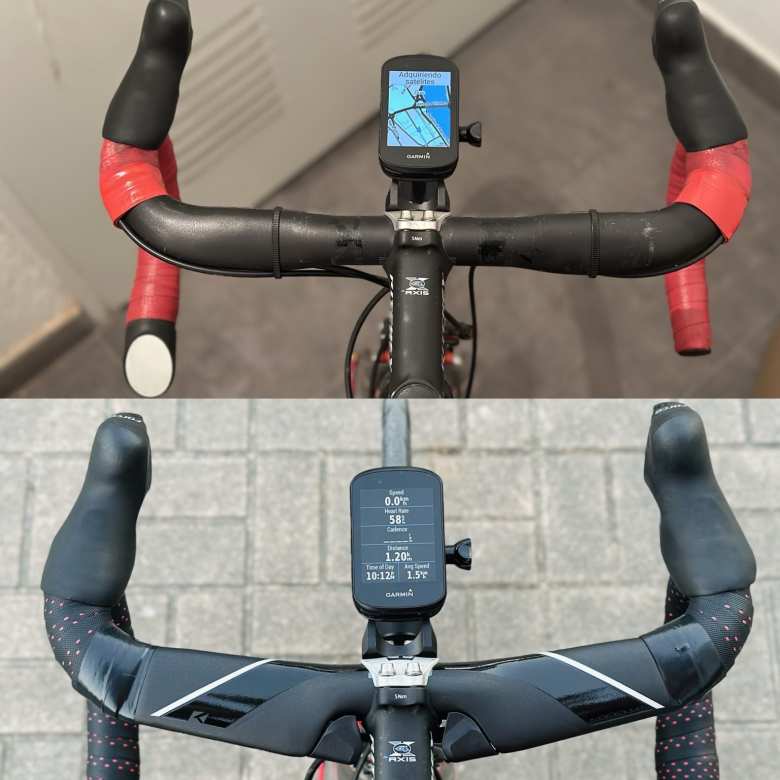
After riding it a number of times, I definitely prefer the narrower 360 mm width (measured center-to-center). I have the brake hoods angled in so that they measure about 330 mm center-to-center.
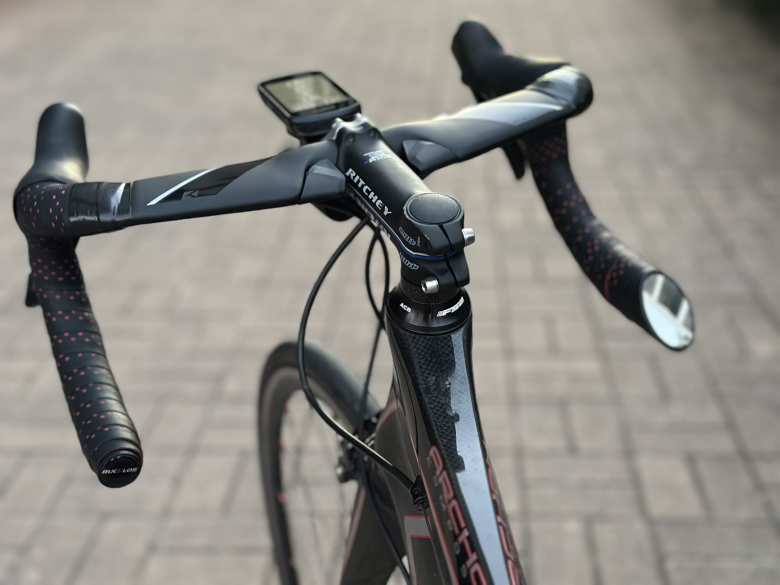
While I was at it, I replaced the handlebar tape with some cushier Rock Bros. black tape with red backing. I think it looks more harmonious with the bike’s paint scheme than the red tape I was previous using.
Another upgrade I did was replacing the brake pads. The old ones were some generic red pads that came with the ultralight Mr. Control CNC brakes. They still worked fine, but I replaced them with Shimano R55C3 ones. Front and rear pads in total cost only 12€, but was an important safety upgrade, particularly since the rear ones were worn almost all the way through and I will need plenty of stopping power on the long, steep descents of London–Edinburgh–London.
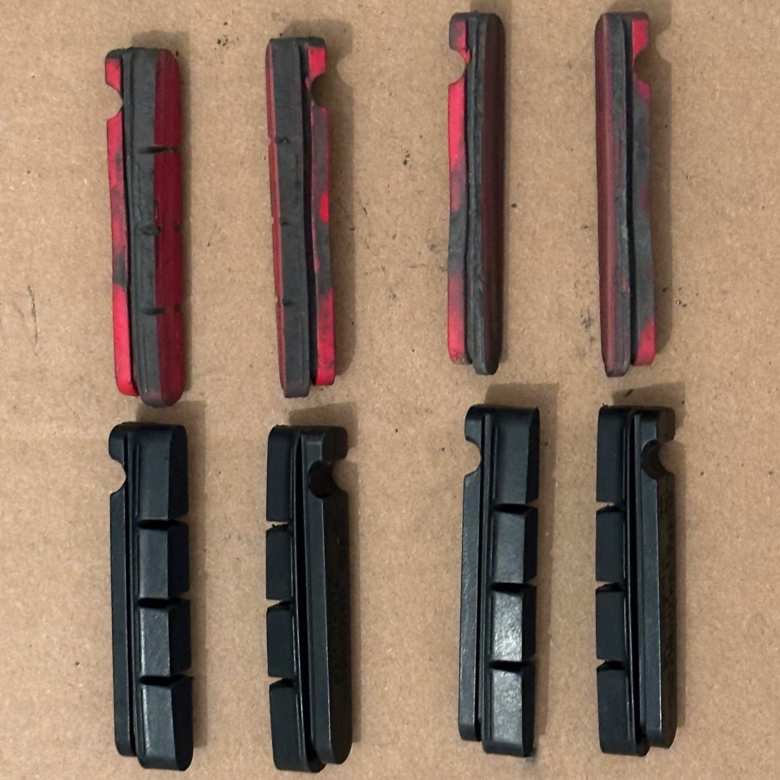
I also tried my best to realign the rear derailleur hanger, which was bent, and replaced the rear shift cable. The rear derailleur now shifts more precisely, with lower effort at the levers, than it ever had during the last 10 years.
Lastly, I replaced the rear tire with a 700x28c Schwalbe Pro One TLE Evo. This tire has low rolling resistance, good ride quality, and is lightweight and easy to mount. When my front 700x25c Hutchinson Fusion 3 tire is worn down, I will replace it with another one of the Schwalbes. Until then, I will run 75 PSI in the front tire and 70 PSI in the larger volume rear.
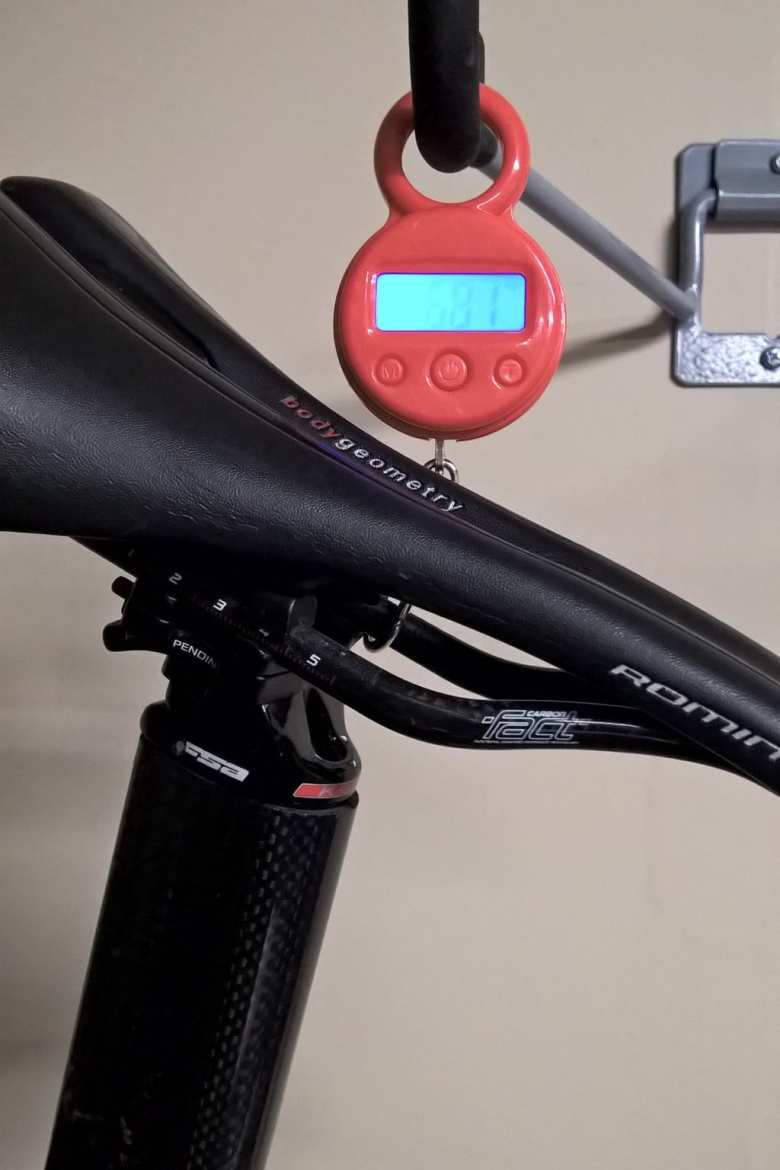
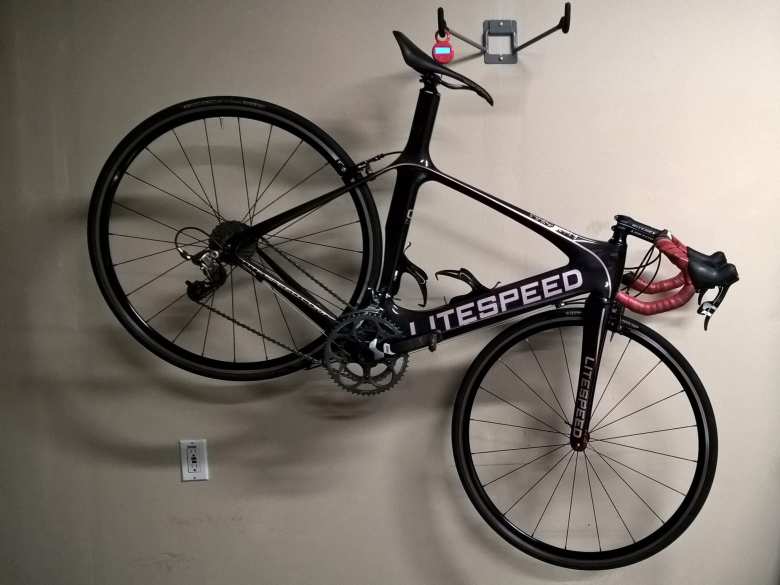
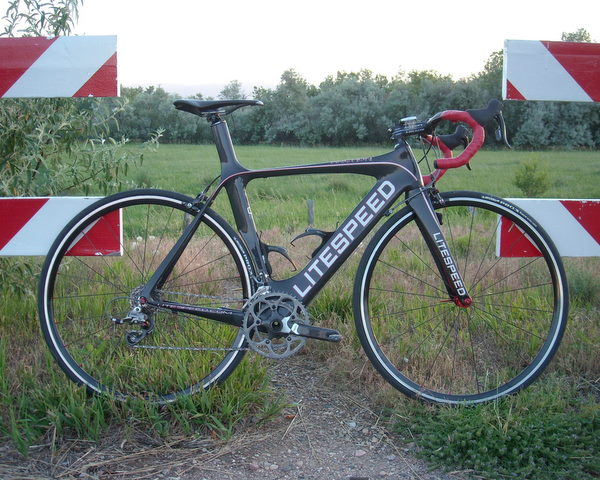
There are 12 comments.
Felix, you should call it Cherry! (Since you cherry picked it. Just a suggestion.)
How many hours did you spend on gathering the parts and building the bike?
It has been taking me tons of time and still under construction. I am too embarrassed to tell at the moment!
Thanks Ken! I like your name suggestion and may adopt it.
It took me almost six months to procure all the parts. I assembled everything in about a day (maybe 7-8 hours).
Did you buy any groupset on ebay?
Nope, I did not buy any gruppo on eBay. I've only purchased individual parts.
I saw a picture of the Super Bike in a Facebook post, but I didn't realize that this was your new bike. Looks fast! I'm still poking along on my 1995 (!) Trek 5200. The solid tires are still in use. No flats, but still slow as ever. One day, I'll upgrade my bike - have you thought about installing disk brakes on the Super Bike?
Hey Felix, nice bike. Mine is also the 2010 C2, they only made the C2 for one year. I have dura ace 7800 front and read derailuers, and Ultegra 6600 brakes and shifter. Handlebar/Stem is Zipp CF, and a Fizik seat. Wheels are Ksyriums. I love my bike and happy to see someone else that does as well. I'm mostly commuter and recreational, with about 10K miles on it so far. Still solid, very strong.
Thanks for the article. I am building a C2 with tiagara shifters and 105 groupset 2x10
Thanks for the note and good luck with the build!
Thanks. This has been a great resource. Do you still ride her. I also have a polished Litespeed Vortex with a 2x11 groupset
Hi Ron. I do still ride her and have a couple of big (hilly and long) rides for her planned this year. I bet your LItespeed Vortex is sweet. I've always admired Litespeed's titanium frames; maybe more so than even before due to titanium's durability.
Hi Felix! I just recently picked up a used Litespeed Archon C2. Do you know what's the widest tires this bike will accept?
I mounted a 700x28c Schwalbe Pro One TLE Evo tire on the rear rim today. There is lots of room all around for it.
Granted, the rims on my Yishun wheels are narrow (16mm internal wall-to-wall width; 19.4mm external width), and the tires measure only 26mm wide on them. But even if they measured 28mm, there would still be plenty of room.
I still have a 700x25c tire mounted on the front wheel. But as there are is even more clearance at the front than the rear, there would absolutely be no problems fitting a 700x28c tire there.
There's a "ballooning" effect of the wide tires on narrow rims that probably makes them less aerodynamic. But the resultant O-shaped profile might be better for both handling and comfort.